When working with customers in Europe or who serve their data in the US and Europe, I am stunned when they ask why their performance is so much slower in certain European countries compared to the US.
Glimpsing at some publicly available stats (thank you Statcounter!), the reason is clear: Android is the dominant Mobile platform in Europe.
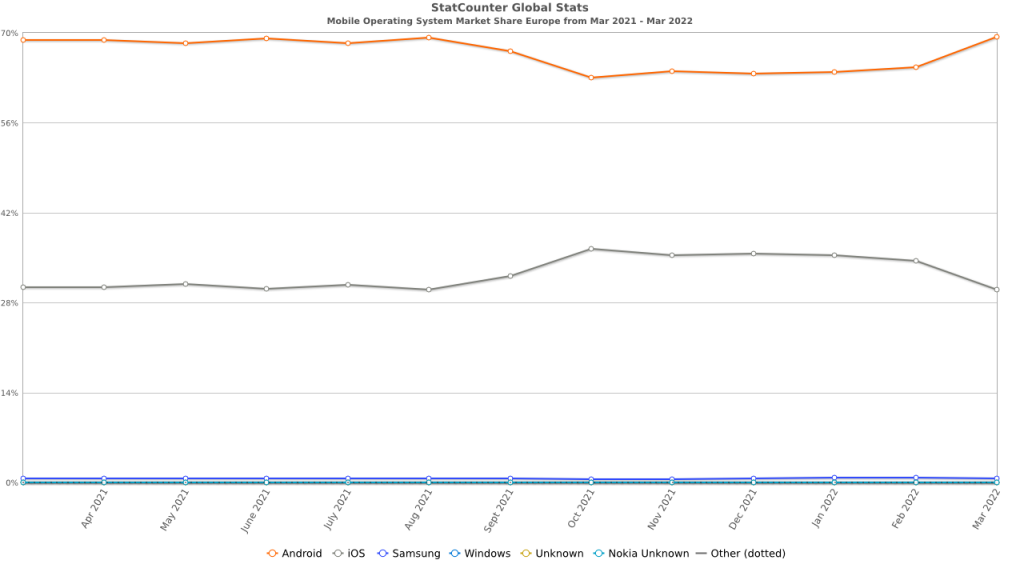
This doesn’t hold true everywhere in Europe – in the UK (yes, it is still in Europe!), Android and iOS have nearly equal Mobile device market share.
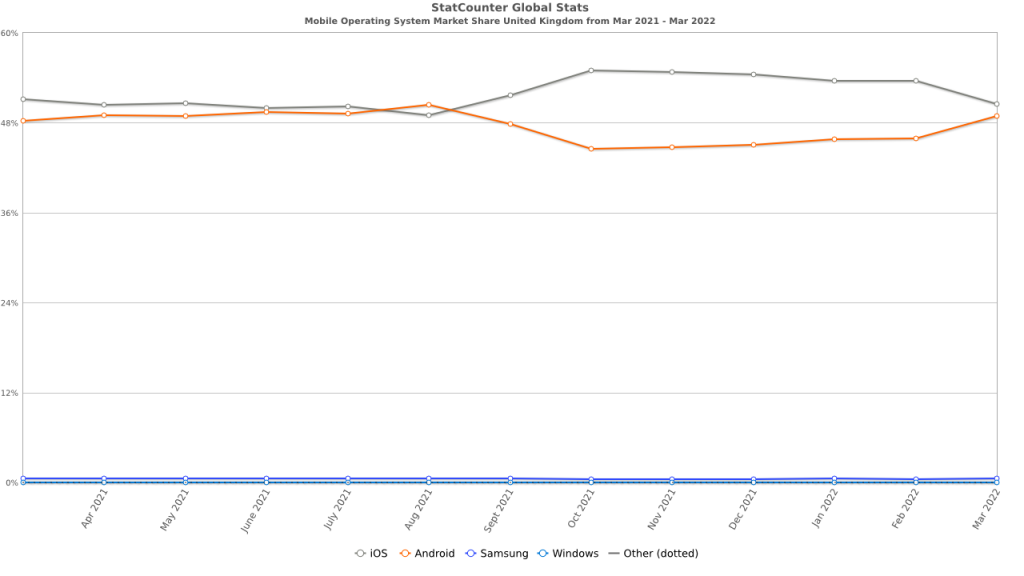
But in Germany, the divide is vast, with Android clearly dominating the playing field.
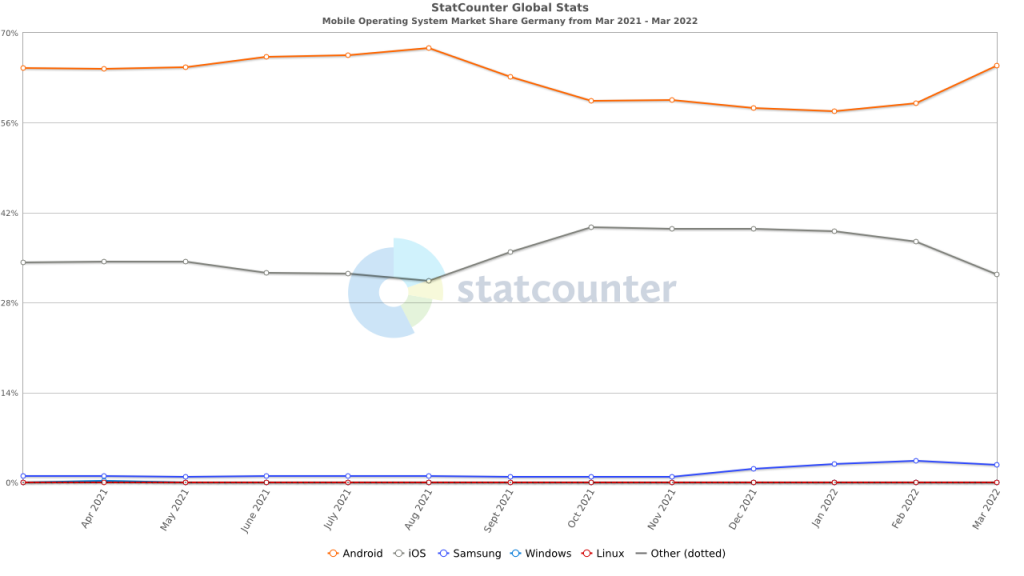
But there is yet another divide that is greater than even the Android/iOS split – the Android version difference. Depending on the country, your performance could be dependent entirely upon the versions of Android that the visitors use.
Starting with Germany in Q1 2022, Android usage is dominated by the three latest OS versions: 10, 11, and 12.
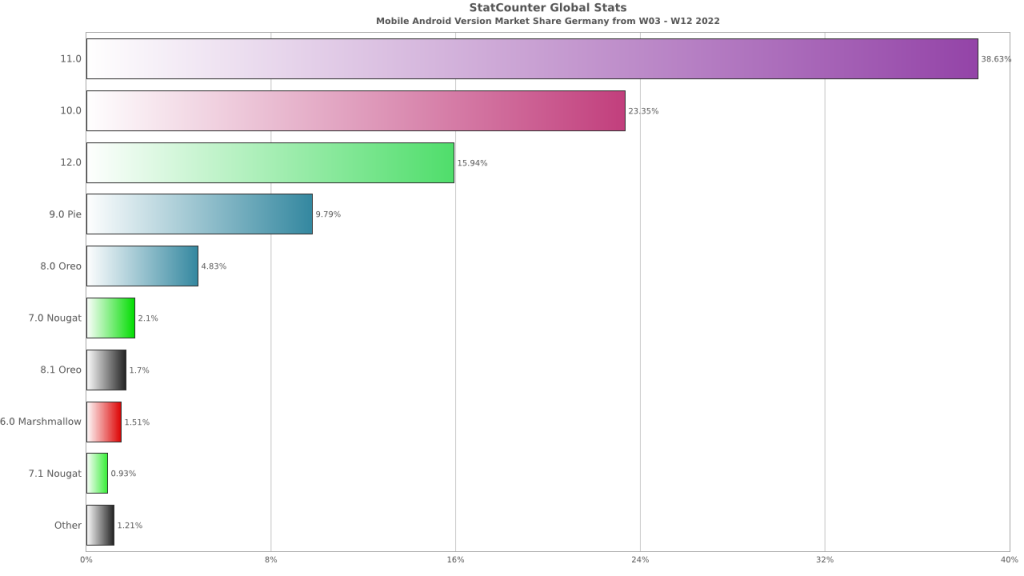
But in countries like Spain and France, Android/9 is still a prevalent OS. This version of Android runs on much older hardware and is more likely to experience degraded performance compared to those running 11 or 12.
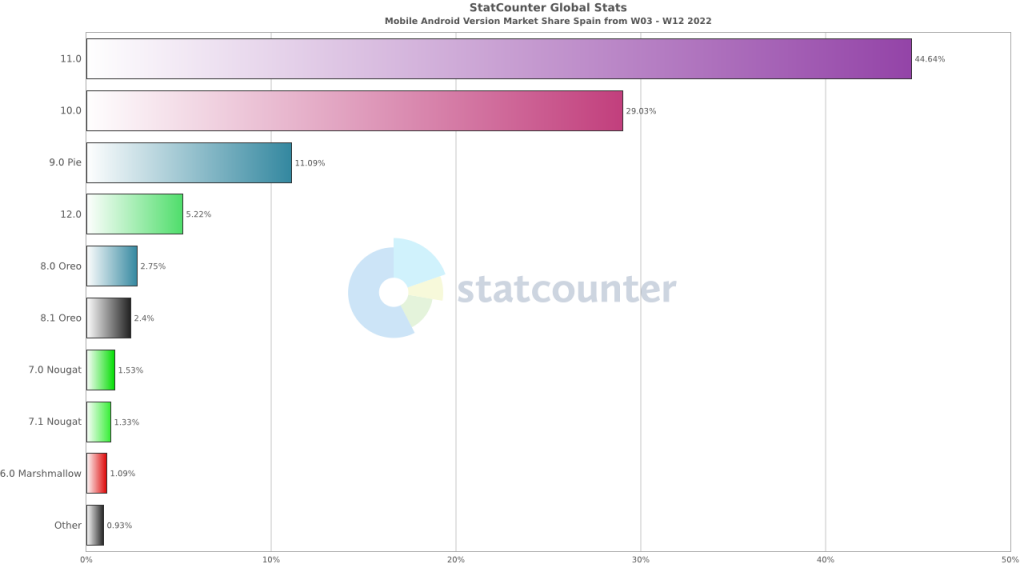
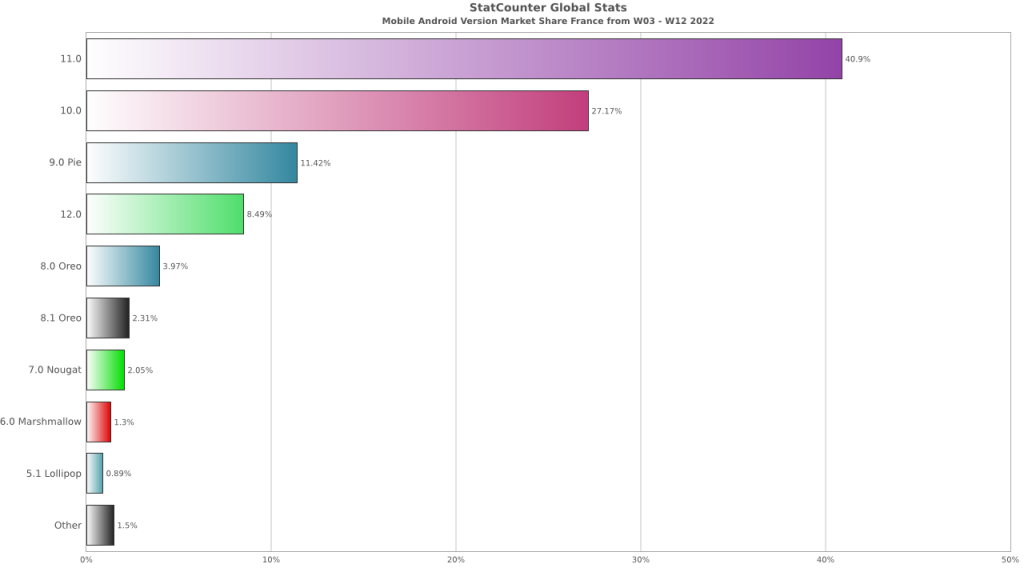
For teams trying to design performant web sites, this is a critical piece of information. While Mobile is the dominant platform, sites need to be designed to deliver excellent user experiences for all visitors. And in Europe, this means Android users.
What can you do?
- Focus on rendering – Get your critical content and functionality on the page as quickly as possible. Items that are secondary (ads, tracking, marketing, etc.) can be delayed
- Reduce your JS as much as possible – Older Android versions struggle with hardware limitations, so reducing the upfront JS processing will be critical
- Optimize your images – Sounds simple enough, but using an image management service that provides the right image for the device that is viewing the content will make your site device appropriate
And, most importantly, use an Android device. If you make your development team use Android for a week, they might get the message that they need to do more to reach into this neglected Mobile population.
If you’re a browser geek like I am, check out this post I wrote in 2009 about the browser stats. The world is a very different place now.

Leave a Reply